You will find a number of options available while checking for an espresso machine but what works well for you might not work for the others. Thus, before buying one, you should be clear about your requirements. Here is a list of factors that you should check out for:
1. Types:
There are three main types of espresso coffee machines available in the market: Automatic/Semi-Automatic, Super Automatic, and Capsule Espresso machines. Many users prefer using automatic and semi-automatic machines. We have explained all the types of espresso machines after these factors.
2. Boilers:
The setup of boilers in the espresso machine determines how is the water heated, stored, and then used for different parts of the coffee maker. There are 3 types of boilers that are used in espresso machines:
-
Single Boiler:
An espresso machine with a single boiler has just one boiler with a single source of hot water.
An espresso machine performs 2 main functions: creates espresso and steam milk. Thus, in an espresso machine with a single boiler, the machine can’t heat the milk and make espresso simultaneously. You will have to wait for the boiler to finish the first task and then start the second task.
If you need an espresso machine to make only one or two cups of coffee at a time or if you prefer drinking only black coffee, a single boiler machine will serve your purpose perfectly.
However, this does not mean that these machines are not an adequate option. Instead, if you are a beginner, buying a low-end single-boiler espresso machine can be very helpful.
-
Dual Boiler:
In a dual boiler espresso machine, there are two boilers. This means that there are two sources of hot water: one source to brew coffee and the other to steam milk. You can find dual boilers in commercial espresso machines. These machines offer a good amount of control along with consistency.
Using a dual boiler espresso machine allows you to change the temperature at which the brew is boiling so that you can control the process as per your convenience.
-
Heat Exchanger:
Heat exchanger espresso machines have a small pipe of a specific length that runs through a single boiler. As the water (in room temperature) passes through the pipe, the water starts heating until it reaches the set brew temperature and is then pumped through the portafilter. There are both positive and negative pointers for the heat exchange espresso machines.
As the water is heated when it is passing through the pipe rather than the boiler itself, there is a variation in the water temperature from the start till the end of the brewing cycle.
Initially, when the water starts flowing, it is very hot, but by the time it reaches the end of the shot, the temperature cools down significantly. This leads to an uneven and unpredictable extraction of the coffee.
The advantage of the heat exchange espresso machine is that the water that is going to be used for brewing will be temperature-optimized. Also, since the steam and the brewing water come from different outlets, both tasks can be performed at the same time.
Some users prefer using heat exchanger machines over dual boilers as the water that is used for brewing does not come in direct contact with the boiler element. Thus, it does not sit in the boiler for a longer time.
3. Steam vs. Pump Espresso Machines:
All the espresso machines use either steam or pump technique to create pressure. An adequate pressure (i.e. 9 BARS of pressure) is very important to achieve tasty and rich shots of the espresso coffee along with an enhanced aroma. We have explained them in detail below.
-
Electric Steam Brewers:
These types of brewers use steam pressure that is generated mostly by an internal boiler. Water is first boiled in a sealed tank. This creates steam pressure which pushes the boiling-hot water through a bed of finely ground coffee (it is typically packed within a portafilter). From here, the brew streams directly to your cup or coffee pot that is placed below until the brewing process is finished.
However, the Electric Steam Brewers are not really capable of making a true cup of espresso as the steam can create only 1.5 BARS of pressure. This is very lesser than the required pressure of 9 BARs which is required to get properly extracted coffee with enough foam.
This machine also makes the water temperature hotter than the required temperature range. This, in turn, results in bitter taste with higher acidity levels. These brewers come at an affordable price.
-
Pump Espresso Machines:
The pump espresso machines feature a superior design as they come equipped with different systems for achieving the required pressure and for controlling the temperature of the water. Hence, these machines not only generate the required pressure but also maintain ideal water temperature for a balanced and rich extraction.
The pump espresso machines generate pressure for brewing using an electric pump that can easily produce 9 BARs (or more) of pressure. This helps in producing flavored extractions along with thick and rich crema.
You will need a pump to let the water flow through the machine if your coffee maker does not have a lever. Most of the espresso machines either have a vibration pump or a rotary pump.
A rotary pump comprises of two main parts – a motor (that is large in size) and the pump (that is relatively smaller). A vibration pump, on the other hand, does not have multiple parts and is small in size.
You will find a rotary pump in most of the commercial espresso machines as these pumps are more reliable. Vibration pumps are generally designed for smaller espresso machines that are used at home.
4. Capacity:
Capacity is a very important factor that you should consider before buying an espresso machine. Selecting the capacity depends on the number of members in your family. If you live in a joint family with 8-10 members, you should look for a machine that can make at least 8-10 cups of coffee at one go. However, if you need only 2-3 cups of coffee, you can look for a small and compact unit.
5. Built-in Coffee Grinder:
The flavor of the freshly-ground coffee is just amazing. Thus, buying a machine with a grinder can be a convenient and space-saving option. It is a great feature for those who don’t want to buy coffee grinder separately or for those who have a very limited countertop space available.
Generally, you will find an in-built grinder in super and fully automated machines. If you want the espresso machine to weigh the appropriate amount of beans required, grind, and then move it to the allocated space, you will have to definitely pay extra money for this feature.
You can save a lot of money by buying a machine that comes without a grinder. However, in this scenario, you will have to buy a coffee grinder separately as the taste of the pre-grounded espresso is not the same as the freshly ground coffee beans.
6. Frothing Wand:
Frothing wand is a very common feature in most of the espresso machines. But, if you like those types of espresso that require steamed milk, you must make sure that the unit that you are going to buy comes with a frothing wand.
All the super-automatic espresso machines offer a frothing feature to make cappuccino or latte. Some super automatic machines even come with an automatic frothing feature that allows you to mix milk and coffee at a time by pushing a button.
7. Water Filter:
The quality of the water also has an impact on the flavor of the espresso. An espresso maker that comes with a built-in water filter makes sure that the additional flavor of the water does not affect the overall flavor of the espresso. Buying an espresso maker with a water filter can be a wise option as it removes chlorine, bad taste, and strange odor from the water completely.
8. Cup Warmer:
A cup warmer is a nice additional feature. If you want to keep your coffee cup to be warm so that the espresso remains warm for a long time, you can look for a machine with this feature.
9. Display:
Espresso machines have displays that are helpful in keeping you informed whether the machine needs any sort of maintenance or not. Whenever the water tank is empty or if there are no more coffee beans left, the display notifies you accordingly. It also tells you when to clean the machine or empty the ground bin. Buying a machine with a display is helpful in the long run.
10. Programmable Settings:
Once you understand the type of coffee that you like the best, you can program the espresso machine accordingly. This will save you from the efforts of changing the setting every time. Some espresso machines even allow you to program the settings for multiple people so that it is easier for everyone to get the perfect coffee always.
Some coffee makers let you schedule the brewing program. There is a timer that ensures that the coffee will fresh, hot, and ready whenever you need it.
11. Auto Shut-Off:
If you often forget to turn off the appliances at your home, you can buy an espresso maker with an auto shut-off feature.
12. Drip Tray:
Drip tray is a removable section where you keep your cup to get the coffee. This tray catches any leftover dripping after removing the cup.
You can remove the drip tray, empty it, clean, and then put it back at its place. Thus, you will not have to take the entire espresso maker to the sink to clean it. Some espresso machines even allow you to remove the drip tray so that you can fit a taller mug or cup beneath the portafilter.
13. Size:
The size of a few espresso machines can be quite big. If you have limited space in the kitchen, you might find it difficult to accommodate a big machine. Most of the larger models of espresso makers allow you to make two shots of espresso at once. They even have some amazing additional features that make up for the huge size.
However, before buying one, check the available space where you are planning to keep it, and then choose accordingly.
14. Design, Appearance, and Finish:
You will find different types of espresso machines in different shapes, sizes, and designs these days. You can buy a machine that looks good aesthetically and that goes along with the other appliances in your kitchen.
Some espresso machines have a special compartment that can be used to keep the cord so that the kitchen counter looks neat and clean. The modern machines come in a stainless steel or chrome finish. You can even choose them. Or, if you wish to brighten up the kitchen, you can go for bold colors like red. Most of the brands offer several finish and color options so that you can buy the machine as per your choice.
15. Durability:
Almost all the high-end models of espresso machines come with a limited warranty. You can figure out the durability on the basis of this warranty period. Along with this, you can get an idea of how good the product is by check the reputation of the brand and the reviews of the users.
The type of material that is used to make the espresso machine also plays a major role in deciding the durability factor. The machines made using metal tend to last longer. They are also helpful in maintaining heat in an efficient way.
The highly automated machines that have multiple electric parts usually require more maintenance or repairs than the manual espresso machines.
16. Maintenance:
All the espresso machines require basic maintenance. Common maintenance work includes descaling, washing the portafilters, etc. For hassle-free operation, you should clean the espresso maker regularly. It also helps in increasing the durability and lifespan of the machine.
Some espresso machines offer an auto-clean feature. Even these machines require some type of maintenance.
Since the design of espresso machines vary from brand to brand, you should ensure that you are buying a machine that is easy to clean and maintain. It should be easy to assemble and disassemble the machine. Keep the coffee descalers and other cleaning products handy to keep the machine in good shape.
If the water supply at your home is not that great, you should put filtered or bottled water (avoid plastic bottles as they are harmful to the environment) in the machine. Using hard water in the espresso machine can lead to corrosion in the pipe of the machine.
17. Ease of Use:
An espresso maker should be easy and convenient to use. If you are looking for a machine where most of the processes are automated, you can easily find such an automatic machine in the market.
You can even get machines where you can get complicated drinks like cappuccinos just with the press of a button.
If you want to buy a machine that is convenient to use, you can buy an automatic machine that offers programmable settings. Check all the options and extra features offered by the machine beforehand.
18. Price:
The price of an espresso maker depends on the brand and the additional features that it offers. You can easily find a good espresso machine with a range of Rs. 4,000 to Rs. 24,000.
19. Warranty:
Each brand offers different warranty options on the coffee makers. Most of the brands offer at least a warranty period of 1 year. Some high-end brands even offer a limited warranty of 2-3 years to cover the defects.
20. Customer Service:
An espresso machine is an appliance that you might like to use for a long time. To ensure that the brand offers a longer lifespan, you should have the contact details provided by the manufacturer so that you can call them for help or repairs if required.
Go through the reviews of the users to check how promptly the brand responds to the queries of the customers. Also check if they actively solve your issues or not.
Good customer service is very important so that you can rely on the brand and get help whenever needed.
Types of Espresso Machines:
There are five types of espresso machines available in the market. The main difference between these types of machines is how easy to use them. Let’s check the different types of espresso machines:
1. Manual Espresso Machines:
It is very difficult to use manual espresso machines. However, they make the best coffee. These machines are one of the first espresso machines that were introduced in the market and some coffee shops still use them.
In this type of machine, you will have to manually fill the portafilter handle, tamp the coffee down, clear the loose coffee ground and lock the handle to the filter holder manually. Even though it sounds pretty simple, pulling the handle too slow or too fast can have a negative impact on the taste of the coffee.
If you pull the handle very fast, the coffee might taste very acidic. Also, if you pull the handle very slowly, the coffee will end up tasting bitter. Even if the coffee bean grounds are too coarse or too fine, the brew might not taste that great.
However, if you are well aware of this process or if you want to learn and perfect this art, you can buy a manual espresso machine.
Pros:
- It produces great quality and very tasty espresso.
- The appliance looks attractive.
- It lasts for a very long time.
- You can have more control over the brewing process.
Cons:
- Manual espresso machines are quite expensive.
- They are a bit difficult to use.
- If not used properly, you can mess up the entire machine.
- It is recommended generally for experienced connoisseurs and baristas.
2. Semi-Automatic Espresso Machines:
The functioning of the semi-automatic espresso machine is quite similar to that of manual machines. You will have to fill the portafilter with ground coffee. However, rather than using your manual power, the machine makes use of a pump to create the exact pressure. The pump delivers consistent pressure. This results in great coffee every time.
In semi-automatic machines, you can start and stop the extraction process. This gives you control over the amount of water that you need to use and the duration for which you want to brew the coffee.
Most of the semi-automatic machines come with a frothing feature on the side. Using this, you can either steam or froth the milk while making latte or cappuccino. There is a tank at the back of these machines that hold the water. There is no space for storing coffee grounds though.
Pros:
- When compared to manual espresso makers, they are very easy to use.
- You can make good quality and tasty shots of espresso.
- The machine lets you have control over the brewing process.
- They are available at an affordable price range.
Cons:
- A few models with additional features can be expensive.
- A semi-automatic espresso maker is not that easy to use when compared to other automatic models.
3. Automatic Espresso Machines:
Most of the users prefer using automatic espresso machines and they are considered the best amongst all the options. To get the best result out of the machine, you should go through the manual that comes along with the machine thoroughly: grind the coffee beans perfectly, measure the correct amount of coffee ground required, and press them properly to the channel bushel.
The amount of water required and water delivery proves is also automated in the fully automatic espresso machine, making it easier to use the machine. They are even easier to use when compared to the semi-automatic machines.
Pros:
- Fully automatic espresso makers are easy to use.
- They are available at an affordable price range.
Cons:
- Since it is fully electronic, most parts of the machine are prone to breakage or damage.
- Some high-end models can be quite expensive.
- You don’t have enough control over the brewing process.
4. Super-Automatic Espresso Machines:
The super-automatic espresso machines allow you to do the entire process with just a click on the button: it can grind the coffee, measure the correct amount, pack and mix the espresso, and lastly discard the used coffee to a waste box that is attached to the machine. They are quite easy and convenient to use. Since everything is automatic, the cost of these machines is high too.
Pros:
- The process of making coffee in these machines is the easiest.
- There are a lot of additional features like programmable settings, built-in grinders, etc.
- It is an all-in-one system with multiple and useful built-in features.
Cons:
- You don’t have any control over the brewing process and the machine does everything by itself.
- They are the most expensive options when compared to all other types of espresso machines.
5. Capsule Espresso Machines:
The capsule espresso machines often (not always) use pump pressure and are very easy to use. You can simply pop in a capsule of the pre-ground coffee and get the coffee. Features and automation capabilities might vary from model to model. However, you can make different types of coffees by the click of a button.
What All Drinks Can You Make in an Espresso Machine?
Most of the drinks available in a coffee shop can be made using an espresso machine. Thus, if you love drinking different types of coffee, you can consider buying a machine at your home.
Using an espresso machine, you can make any of these drinks at a much cheaper price. Correct ingredients and a little bit of time are all you need to enjoy it.
1. Espresso Shot (or Double Shot):
You can use an espresso machine to make espresso shots. It is a darker version of black coffee and many people prefer drinking it in its natural state only.
2. Macchiato:
Macchiato is your regular espresso shot but with a little bit of steamed milk on the top to get some extra foam and to temper the extra-strong flavor.
3. Cappuccino:
Cappuccino is like a macchiato but with extra milk. Cappuccino is one of the most loved and popular ways of drinking espresso. It is very easy to make too.
4. Latte:
Latte is quite similar to a cappuccino. However, it has more milk content and a very thin layer of foam.
5. Mocha:
Mocha is like a cappuccino with additional chocolate.
These are the standard drinks. However, if you like variations, you can add extra touches as per your preference. Some people use whipped cream and other flavoring elements like caramel, or hazelnut. You can even use alternatives to regular milk like soy milk. You might not get froth with soy milk though.
How Can I Make Espresso?
It is very easy to make espresso at home. If you are using a capsule espresso maker or a semi-automatic espresso maker, you will have to follow only 2-3 steps. You will have to put a pod (in capsule system) or coffee beans (in a semi-automatic machine) and get started using the control panel on the machine.
In a semi-automatic espresso maker, you will first have to heat up the machine and then follow the process mentioned below:
-
Start prepping the Beans
You can either use pre-grounded coffee or grind the beans by yourself. You can even use an ESE pod (these are single-serve packets of grounded and tamped coffee beans that are shaped in a way that fits perfectly in the portafilter).
You can get excellent flavors by using freshly ground coffee beans but you should grind it properly. Very coarse powder can make your coffee taste sour and very finely ground can make your coffee taste bitter. Try to grind it is a size that is similar to granulated sugar. It might take some time for you to learn the grinding process but it will totally be worth it in the long run.
You can even use a burr grinder to get a consistent grind.
-
Fill the Portafilter
It is now time to put the coffee powder in the portafilter. If you are making a double shot, you will have to use around 18 grams of ground coffee. Add water to the machine as per the instructions mentioned in the manual.
-
Tamp and Attach the Portafilter
After transferring the coffee grounds to the portafilter firmly, attach the filter to the boiler outlet and lock it in place.
-
Brew
Keep a coffee cup (warm cup preferably) under the portafilter. Read the manual and start the brewing process. As soon as the pull is finished (in about 20-30 seconds), turn off the machine. The length of the pull has an impact on the taste of the coffee. To get the desired taste and flavor, you will have to practice a few times.
-
Coffee is ready!
You can either have the espresso directly like that or add additional elements like frothed milk, steamed milk, or other ingredients as per your desired taste

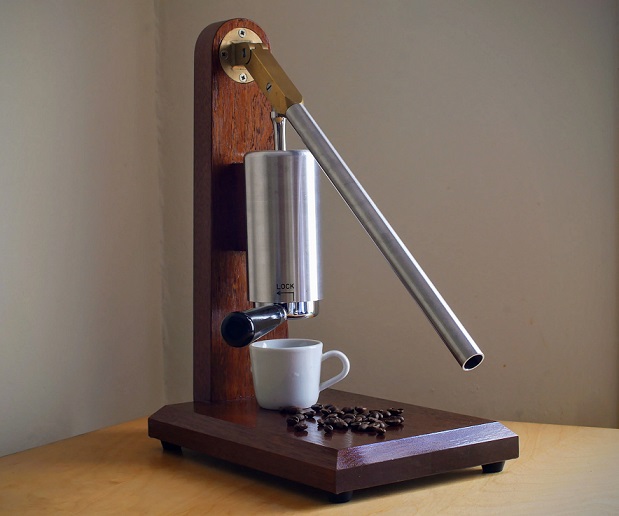
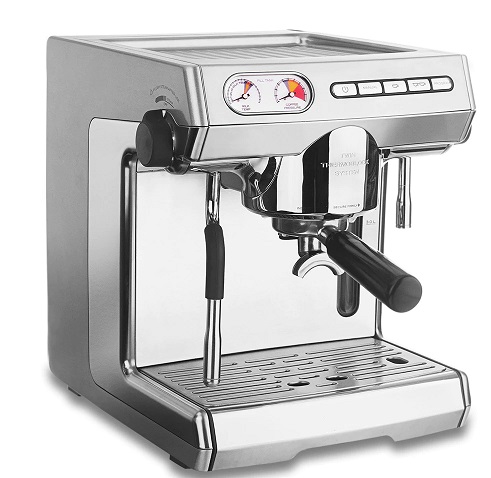
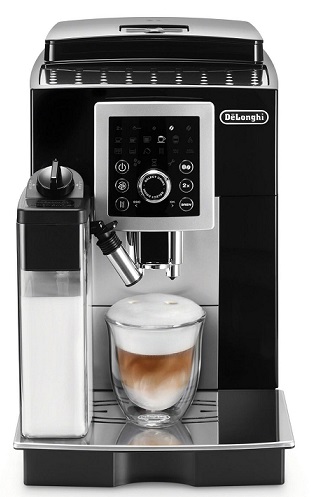
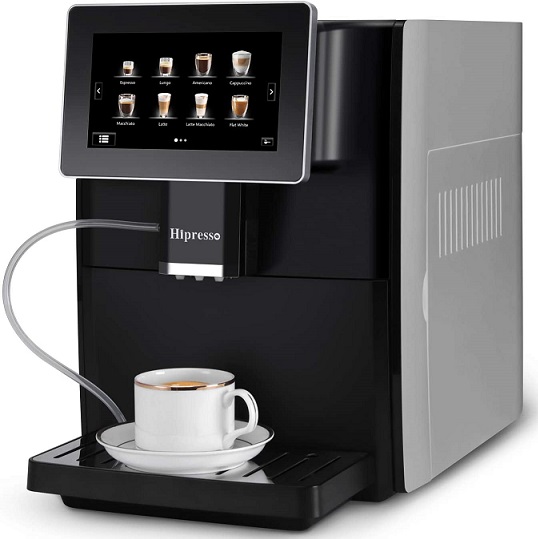
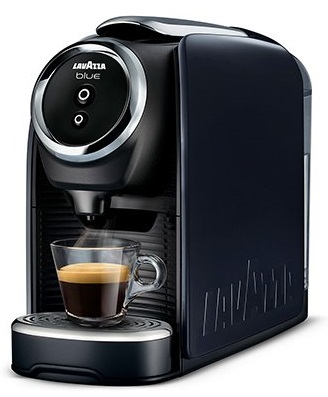

One Response
I appreciate that you explained that by preparing your coffee, you could start by using pre-grounded coffee. A couple of days ago, my cousin told me that she and her business partner were looking for an espresso machine for the new menus in their cafe, and she asked if I had any recommendations. Thanks for helping me learn about this type of machine, I’ll tell her to consider consulting a trusted commercial espresso machine shop for more information about the products they offer.